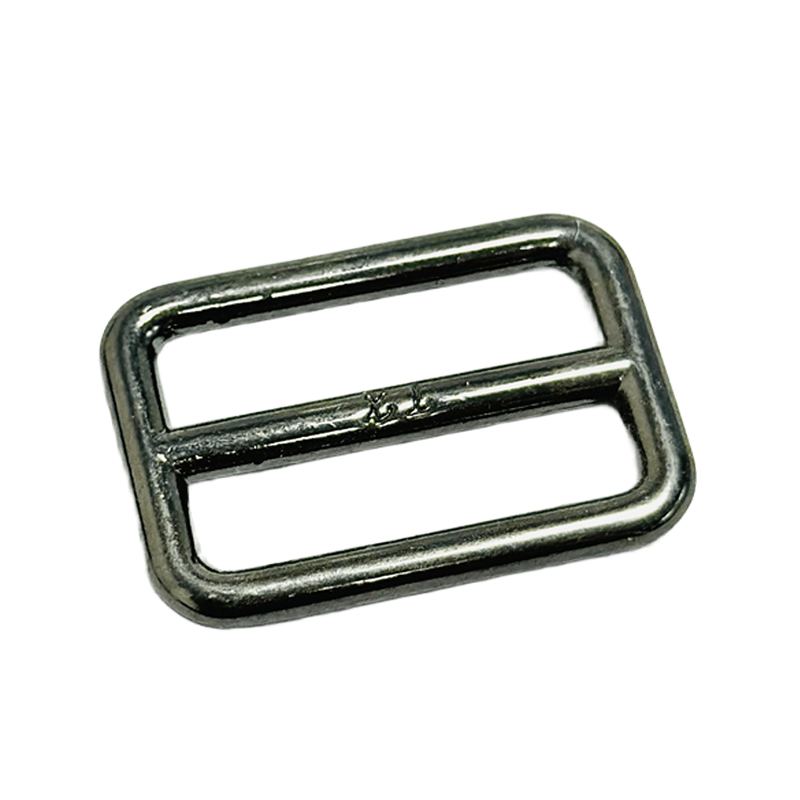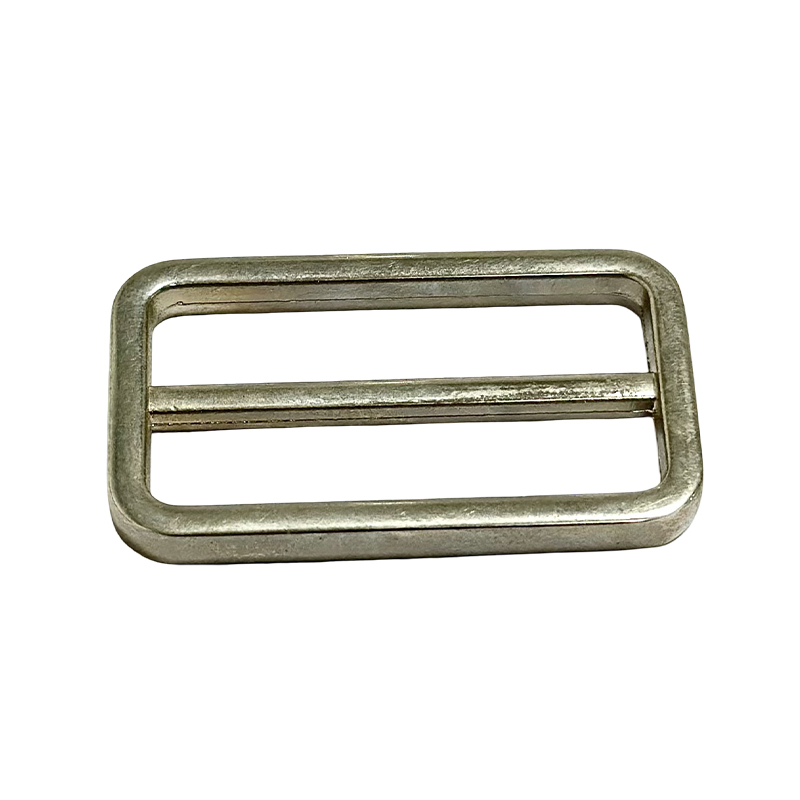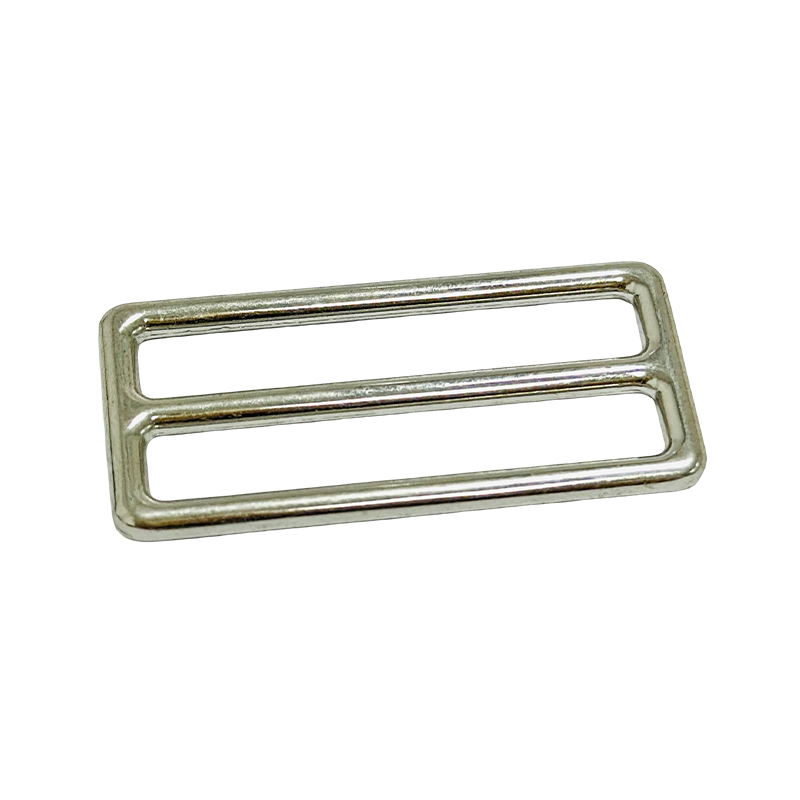How can the welding process for alloy dog buckles ensure a strong connection?
Release Time : 2025-11-11
The welding process for alloy dog buckles requires multi-stage coordinated control to ensure a strong connection that meets long-term usage requirements. Its core lies in meticulous control throughout the entire process, from material selection and process design to quality inspection, to address the differences in physical properties of different metals and the complex stress requirements of various usage scenarios.
Material matching is fundamental to weld strength. Alloy dog buckles commonly use materials such as stainless steel, zinc alloys, or aluminum alloys. Different metals have significant differences in melting point, thermal conductivity, and oxidation tendency. For example, when welding stainless steel and zinc alloys, a welding wire with a melting point between the two must be selected as a transition layer to avoid localized incomplete welds due to melting point differences. Aluminum alloys, due to the tendency for a dense oxide film to form on their surface, require mechanical grinding or chemical cleaning to remove the oxide layer before welding, and the use of flux containing active elements to promote molten pool flow and ensure full fusion of metal atoms. Material purity is equally crucial; excessive impurities can form brittle phases, reducing the tensile strength of the weld. Therefore, raw materials that meet international standards must be strictly selected.
Precise control of welding process parameters directly affects the quality of the connection. Laser welding, for example, offers high energy density and a small heat-affected zone, making it suitable for precision welding of thin-walled alloy dog buckles. During operation, the laser power and pulse frequency must be adjusted according to the material thickness: too low power will result in incomplete fusion, while too high power may burn through the material; the pulse frequency must be matched with the welding speed to ensure stable energy input per unit length. For complex dog buckles, such as those with rotating sleeves for preventing detachment, a segmented welding process is required. First, the main structure is fixed, then the moving parts are welded to avoid deformation of the already formed parts due to high temperatures. Furthermore, the choice of shielding gas is crucial. Argon, due to its stable chemical properties, can effectively isolate air and prevent weld oxidation, but the flow rate must be controlled to avoid turbulent airflow affecting the stability of the molten pool.
Structural design optimization can significantly improve weld strength. The locking mechanism of alloy dog buckles typically includes multi-stage latches, and precise positioning of each component must be ensured during welding. For example, a 0.1-0.2mm assembly gap must be reserved when welding the elastic element and the positioning steel ball to ensure that the elastic element can freely expand and contract after welding, while preventing the steel ball from falling off due to excessive gap. For critical components subjected to tensile stress, such as the connection between the buckle and the rotating sleeve, reinforcing ribs can be used to distribute stress by increasing the weld length, or T-joints can be used instead of butt joints to improve shear resistance. Some high-end products also undergo localized quenching at the weld to increase material hardness and enhance wear resistance.
Real-time monitoring during the welding process is crucial for quality assurance. Automated production lines are often equipped with infrared thermometers and visual inspection systems to monitor the molten pool temperature and weld formation in real time. If the temperature deviates from the set range, the system will automatically adjust the laser power or welding speed; if weld misalignment or porosity defects are detected, the defective product will be immediately marked and rejected. During manual welding, welders need to judge the molten pool condition based on experience, such as observing the color: for stainless steel welding, a bright white molten pool indicates a suitable temperature; if it is reddish, the power needs to be reduced; for aluminum alloy welding, the molten pool surface should be smooth and without ripples; if "orange peel" texture appears, it indicates that the oxide film has not been completely removed.
Post-processing can further improve weld strength. After welding, the alloy dog buckle requires stress-relief annealing. This involves slowly heating to a specific temperature and holding for a certain time to eliminate residual stress generated during welding, preventing cracking due to stress release during use. For products with high surface finish requirements, sandblasting or electroplating is also necessary. Sandblasting increases surface roughness and improves coating adhesion; electroplating forms a dense oxide film, isolating corrosive media and extending service life. For example, thickened dog buckles for pet leashes are often made of 304 stainless steel and nickel-plated, enhancing both corrosion resistance and aesthetics.
Quality inspection is the final line of defense in the welding process. In addition to routine visual inspection and dimensional measurement, destructive and non-destructive testing are required. Destructive testing includes tensile and bending tests, simulating the stress conditions in actual use to verify the tensile strength and toughness of the weld. Non-destructive testing uses X-ray or ultrasonic flaw detection technology to detect defects such as porosity and cracks within the weld. For example, during inspection, a certain brand of alloy dog buckle was found to have a lack of fusion at the weld root. Tracing back, it was discovered that this was caused by excessive welding speed. After optimizing process parameters, the product pass rate significantly improved.
The welding process for alloy dog buckles requires attention to multiple aspects, including material selection, parameter control, structural design, process monitoring, post-processing, and quality inspection. Systematic management ensures a strong connection. With the continuous advancement of welding technology, such as the application of new processes like laser-arc hybrid welding and friction stir welding, the welding quality of alloy dog buckles will be further improved, meeting the demands of more stringent application scenarios.







